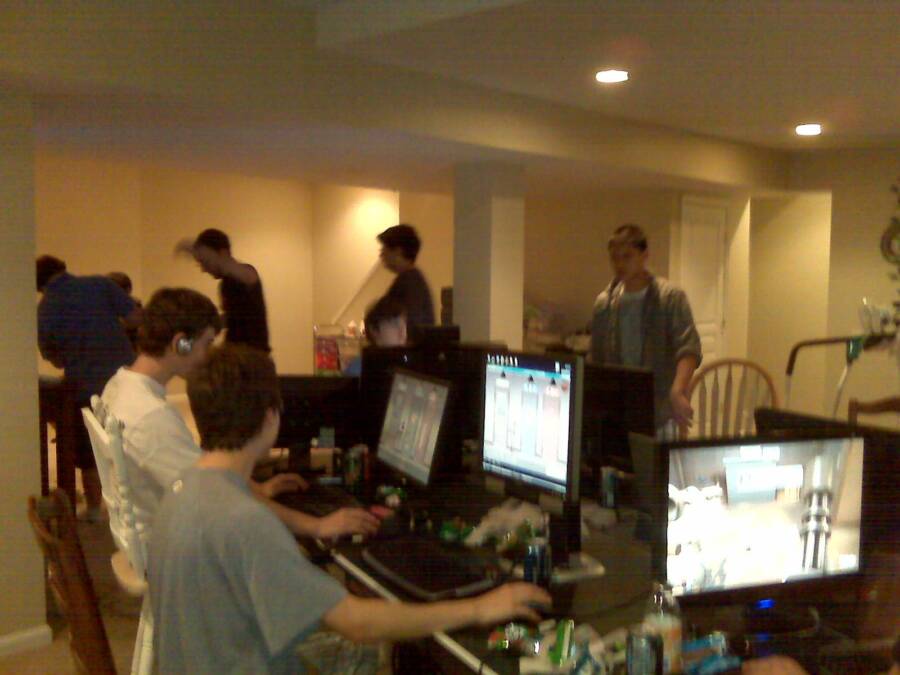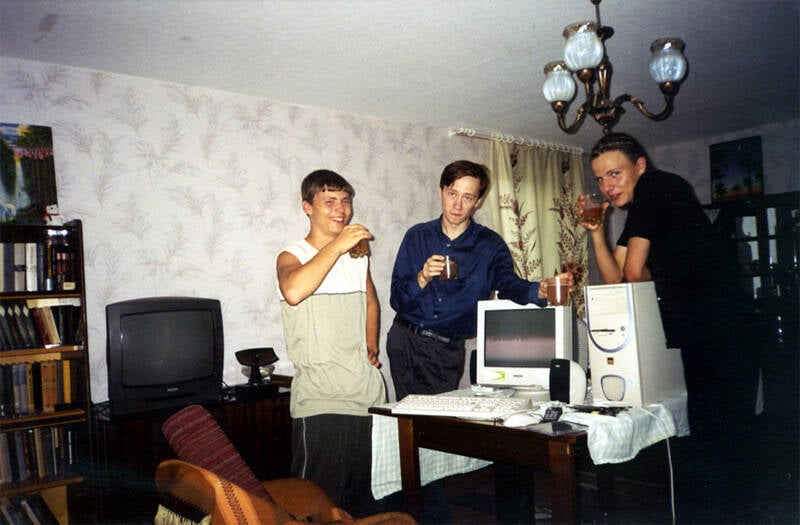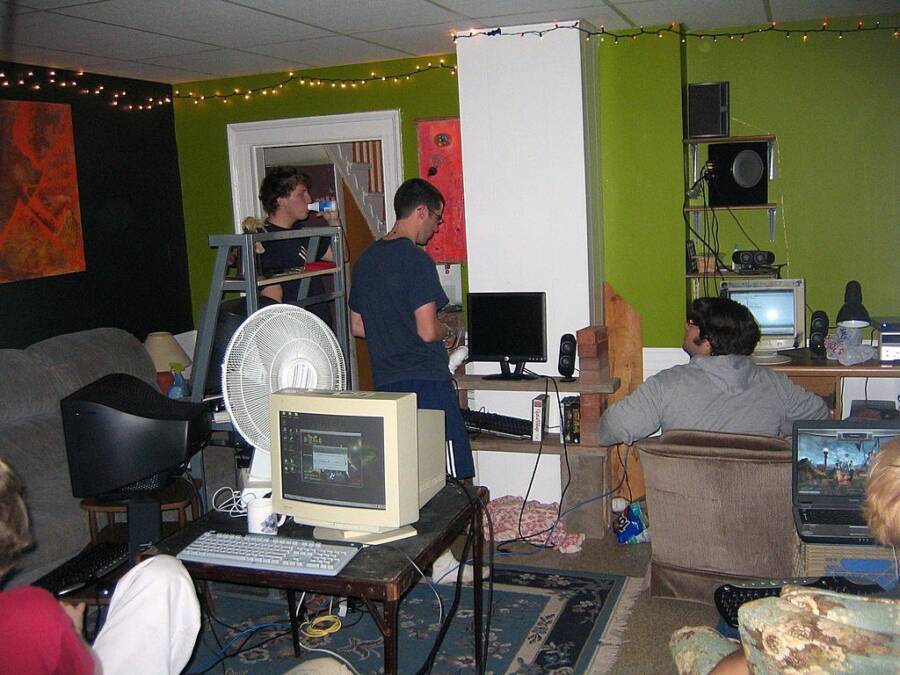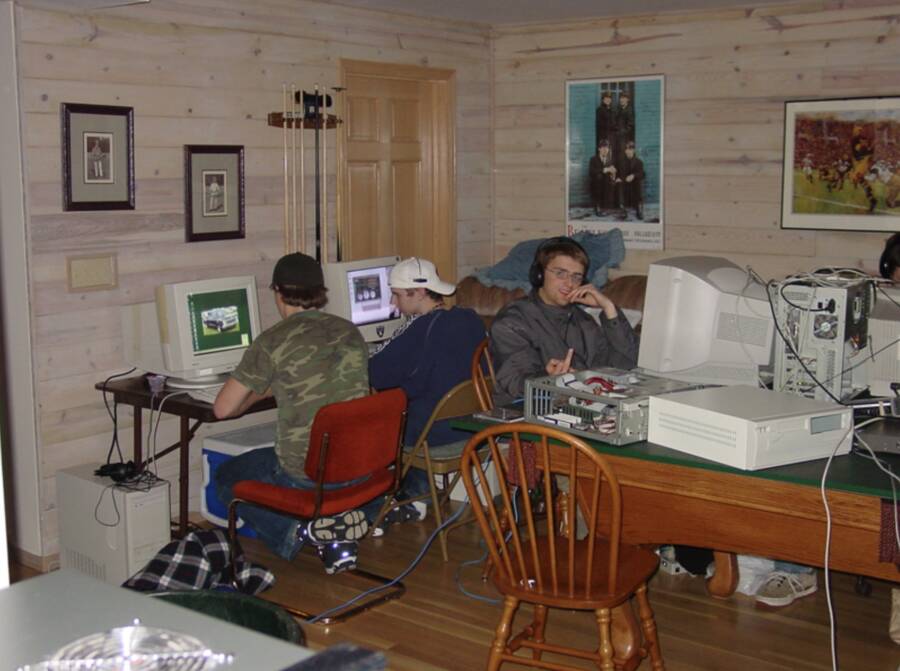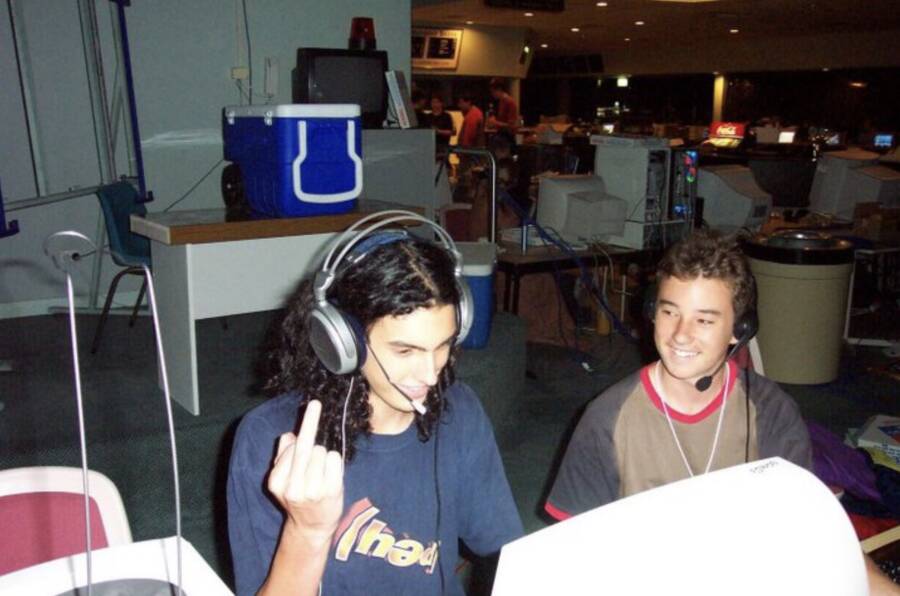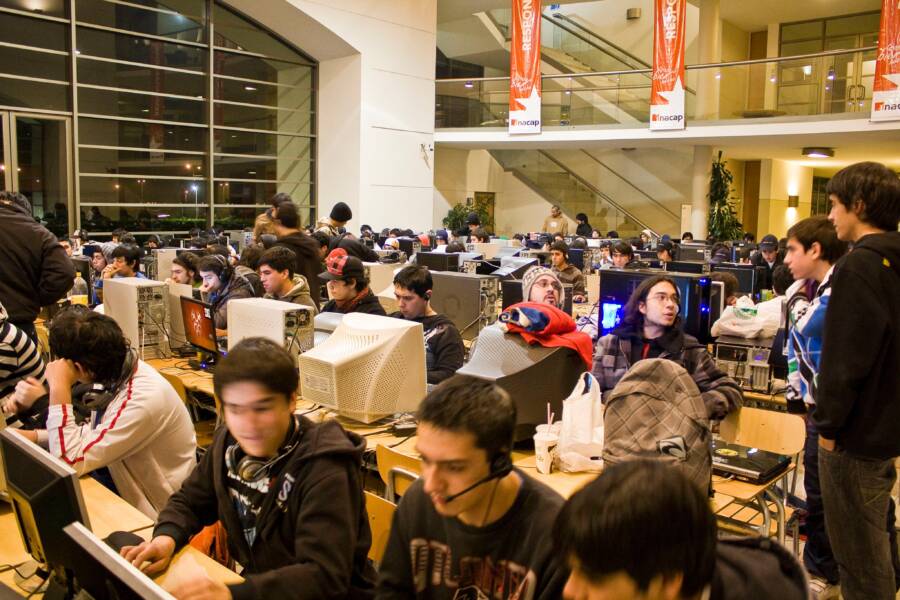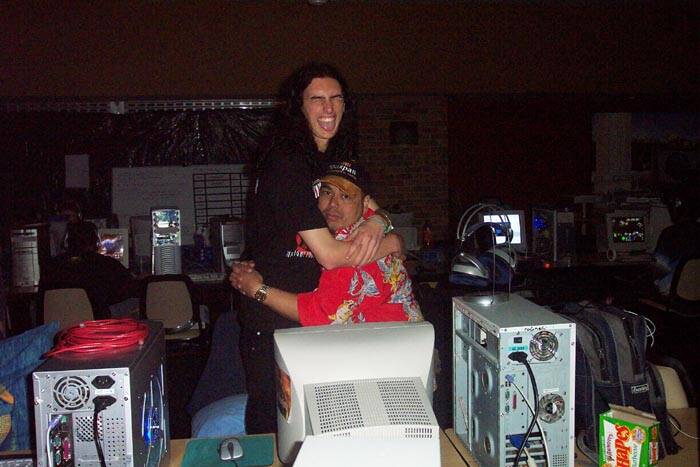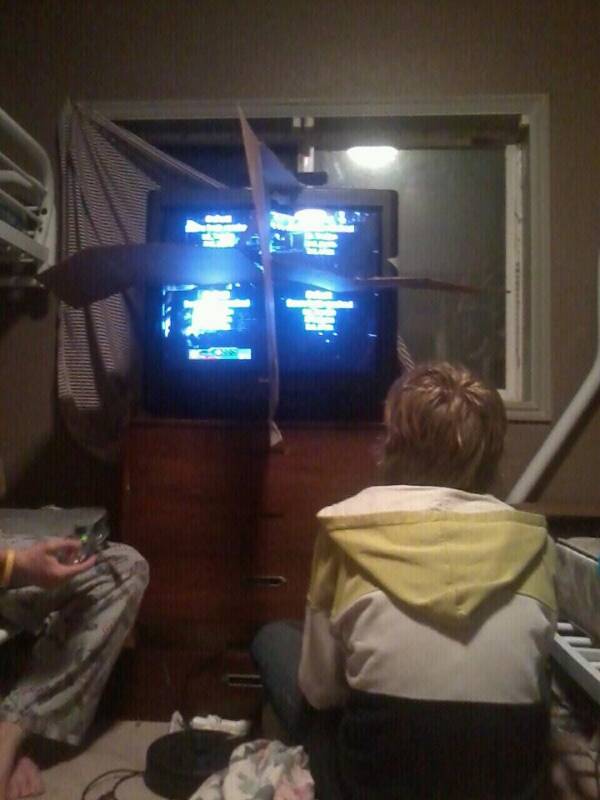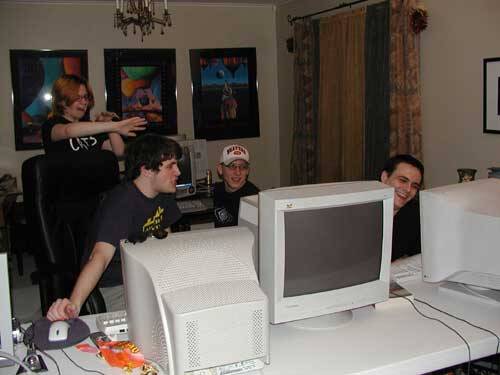From games like StarCraft and Counter-Strike to the endless supply of greasy pizza and energy drinks, LAN parties were the ultimate places to be for young gamers.
Gamers today have it easy, all things considered. With high-speed internet and widespread accessibility to online services, gaming with friends is as simple as booting up a game and inviting your friend to join, no matter where they are in the world. Things weren’t always so simple, though.
At the turn of the 21st century, as the 1990s became the 2000s, the world was on the precipice of mainstream broadband internet access. Online games were widely available, but stable online connections were not. And while split-screen gaming had been a thing since the 1970s, new multiplayer games were hitting the market — which were better suited to a one-person-per-monitor experience, with a single mouse and keyboard used for controls.
This new wave of games amid the excitement of updated technology brought newfound accessibility to countless young gamers around the world, but it also posed a question: How am I supposed to play these new games with my friends? The solution, of course, was LAN parties.
A LAN, or local area network, is a fairly simple concept. It involves a group of computers or other devices that are all connected in one local area. Think of a school library or computer room. These devices are often hard-wired via an Ethernet cable to run off the same local network, rather than using individual connections and linking together wirelessly over the internet.
In the days before broadband internet allowed humans to connect instantly on individual networks, LAN parties were the best way for a group of friends — or potential enemies — to get together at each other's homes or at community gathering places and enjoy top-of-the-line PC games.
The Early Days Of PC Gaming
Despite the widespread popularity of PC gaming today, gaming itself was once relegated almost exclusively to arcades, and then later to home consoles. Game consoles such as the Nintendo Entertainment System, the Atari 2600, and the Sega Genesis introduced an up-and-coming generation of people in the 1980s to new video games as they became available.
For a while, the popularity of these consoles for gaming overshadowed that of PC gaming. Even as more people began to purchase home desktop PCs and dial-up internet became more commonplace, many seemed to use their computers mainly for e-mails and browsing a handful of websites — assuming that no one was trying to use the phone at the same time.
But as time went on, PCs gradually became more advanced. While game consoles were advancing as well, they were somewhat limited by their release schedules. Many games needed to be made for older hardware, whereas most PCs were upgradeable. Better yet, components needed for PC gaming started to become more affordable and widely available.
Then, December 1993 marked a major turning point in the PC gaming landscape, as that was when DOOM was released. According to Britannica, DOOM changed the direction of PC gaming almost entirely, revolutionizing graphics, networking technologies, playing styles, and even the idea of authorship in gaming and widespread public scrutiny toward gaming.
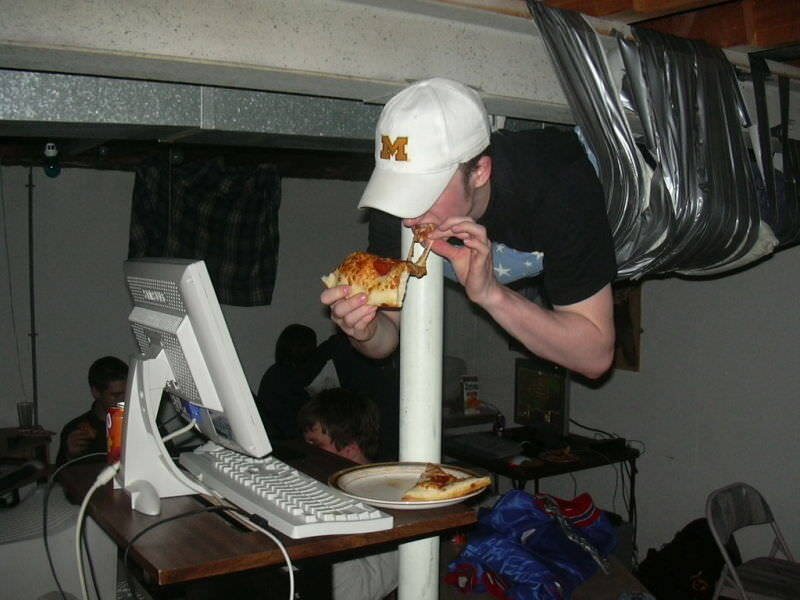
X (Formerly Twitter)At the LAN parties of the late 1990s and early 2000s, many young gamers played multiplayer games like DOOM.
DOOM is also one of the main reasons why LAN parties were created, as this game offered networking for multiplayer gaming, which was exciting for many gamers who wanted to play with their friends and neighbors. Again, though, online gaming wasn't nearly as simple as it is today.
In order to truly enjoy DOOM's multiplayer offerings, you had to be on the same local area network as your fellow players. In short, this meant lugging your entire computer to a friend's house or a community gathering place, wiring up to their local network, and initiating a multiplayer game.
This was, in essence, how LAN parties began. As games got more and more complex, and allowed for more players to join in at once, LAN parties steadily grew — sometimes to massive sizes. Teens would play games like StarCraft and Counter-Strike for hours, enjoying snacks like greasy pizza and potato chips and refreshments like soda and energy drinks.
Though some parents disapproved of these parties, they were widely considered one of the best things about gaming in the late 1990s and early 2000s. And while these events have largely dwindled in the modern day due to the rise of high-speed internet, they haven't disappeared entirely.
How LAN Parties Have Endured
As Kill Screen reported, multiplayer PC gaming today takes place mostly online thanks to mainstream broadband internet, but there is still a niche group of people who use good old-fashioned LAN parties for their games.
For the most part, modern LAN parties are reserved for gaming competitions. Competitive eSports, for example, often see players building customized PCs for the parties, decked out with the highest-end gaming mice and keyboards to snuff out their competition.
PC building itself has become a widely popular hobby, with countless videos online showing off various designs and creative solutions to improve speed and performance. Today, building a PC is as much about the aesthetic and creativity that you put into it as it is about the games you can play.

X (Formerly Twitter)A group of gamers at a LAN party in 2004.
But back in the early days of LAN parties, you would have been hard-pressed to find anything other than off-white tower PCs and cables filling the room. People weren't concerned about the hardware or the bells and whistles of their computers — they just wanted to enjoy a game with their friends.
There's something undeniably nostalgic about the peak of LAN party culture of the late 1990s and early 2000s — but it isn't entirely dead today.
A quick search on social media will bring up dozens of results of people hosting LAN parties, even in the 2020s. There's something special about connecting with people in the same room as you play a game together, rather than just talking through Discord. It may not be a necessity anymore, but it's nice to see the LAN party is still alive years after its conception.
After exploring the nostalgic days of LAN parties, check out our gallery of 33 vintage summer camp photos that will take you back to simpler times. Or, see our gallery of 55 '80s photos that will make you laugh and cringe.


